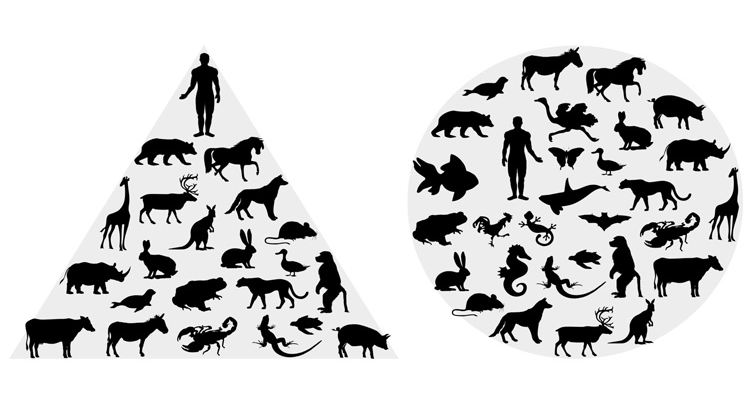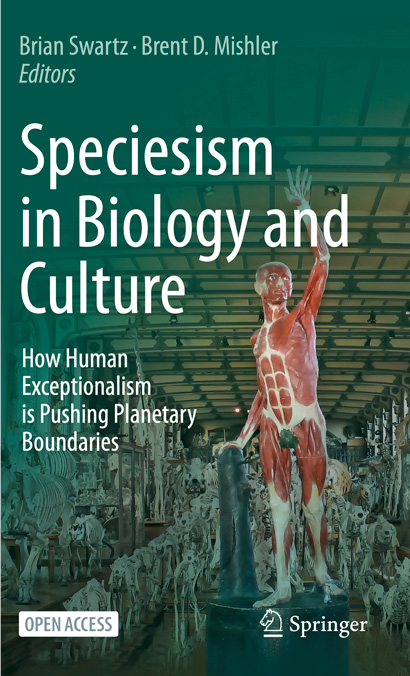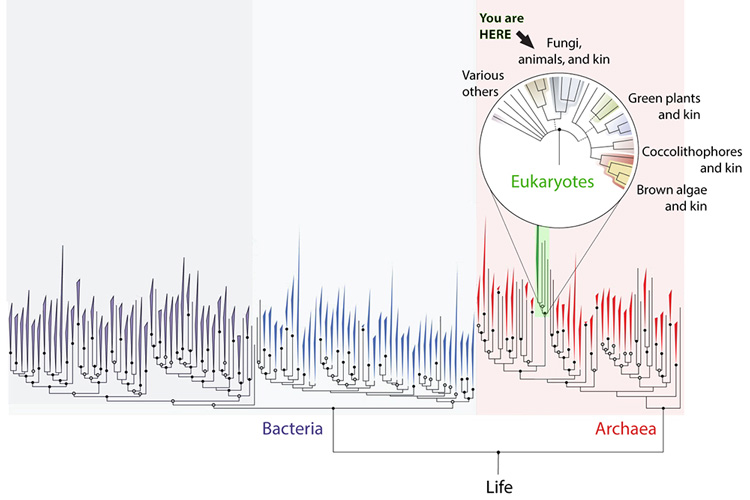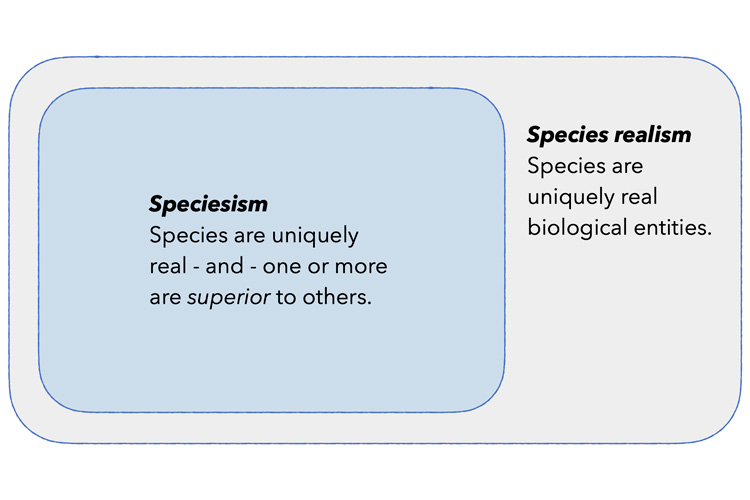Speciesism, Like Racism, Imperils Humanity and the Planet

With the world’s population topping 8 billion last year, it’s clear that humans have achieved a unique status in Earth’s history. We are the only creature that dominate all other organisms on the planet, from animals and fungi to plants and microbes.
It remains to be seen whether humans can retain this dominance as we push the global climate to extremes while driving to extinction the very organisms that we climbed over to get to the top.
In a new book, a group of scientists and philosophers places part of the blame on an attitude prevalent among scientists and the general public — the false belief that species are uniquely real, and that some species are superior to others.
To the researchers, this is analogous to racism — the fallacious belief that races exist as branches on the tree of life, and that some races are superior to others.
“People these days are very conscious of how evil it is for one group of people to think that they’re superior to another race, and yet the same people who are very woke about that are perfectly happy to say, well, humans are in charge of everything, so the rest of the world is ours to use as we see fit,” said Brent Mishler, professor of integrative biology at the University of California, Berkeley, and co-editor and co-author of the book with UC Berkeley Ph.D. recipient and former postdoctoral fellow Brian Swartz.
“The two precepts — that species are uniquely real and that one or more are superior to others — cascade into how humans see themselves and how we behave on this planet,” said Swartz, who is also affiliated with the Millennium Alliance for Humanity and the Biosphere at Stanford University. “Our cultural and biological manifestations flow from this worldview and snowball to affect how we interact with other forms of life, the physical world and other people.”
In the new book, Swartz, Mishler and nine other contributors argue that speciesism — the belief that species are real and that humans are the superior species — “leads to behavior that challenges our future on this planet.”
They instead urge humans to remove themselves from their pedestal and treat all creatures as they would members of the human family by valuing and protecting their lives and habitats.
“The way I put it to my students is that it’s like we’re a huge, diverse family living in the same house, which is Earth, and we need to get along. Not just the human family. We’re talking about everything — plants, animals and bacteria. What one does stresses another,” said Mishler, an evolutionary biologist who is director of the University and Jepson Herbaria at UC Berkeley. “We’re not arguing that humans are not important. We’re just saying they’re only one of many of the life forms at the tips of the tree of life.”
The book, Speciesism in Biology and Culture: How Human Exceptionalism is Pushing Planetary Boundaries, was published this month as an open access eBook by Springer, an imprint of Springer Nature Switzerland AG.
Dominionism
The attitude that humans are at the top of the heap has been with us for millennia. In the Bible, God urges man in Genesis to “have dominion over the fish of the sea, and over the fowl of the air, and over every living thing that moveth upon the earth.”

In one of the new book’s chapters, “Species, God, and Dominion,” philosopher of science John Wilkins of the University of Melbourne in Australia argues that the concept of species derives from religion and philosophy, not from any empirical or scientific need. As such, it remains politically important for the religious movement known as dominionism and ultimately impacts environmentalist and conservation politics in the United States and worldwide.
“Having a ‘theoretical’ notion of species is inimical to science and polity,” Wilkins wrote. “It is not needed, as it retains much of its original essentialistic religious origins and emphasizes human exceptionalism to the detriment of ecological stewardship.”
Though dominionism is only one interpretation of the Bible, the concept became codified when Swedish botanist Carl Linnaeus, considered the father of modern taxonomy, and others established a hierarchy or ranking system of life on Earth, with species as the smallest grouping. He lumped species into larger and larger units — genus, family, order, class and kingdom — based on shared physical characteristics. Humans — Homo sapiens in Linnaeus’s binomial system, grouped within the hominid family, primate order, mammalian class and animal kingdom — were presumed the pinnacle of God’s creation within a ladder-like scale of nature, what the ancient Greeks called a scala naturae.
Charles Darwin arguably took God out of the equation, as well as the ladder. The hierarchy evolved into the tree of life, where the tips of each twig represent a living creature and the branches that support them represent extinct ancestors — lineages that descend from common ancestors shared by all life on Earth.
Mishler has argued for decades against considering individual species as the most important grouping, particularly when discussing conservation. He laid out his arguments in a 2021 book, What, If Anything, Are Species? (CRC Press), in which he proposed getting rid of taxonomic rankings altogether, including the binomial system for naming species that is used universally today.
One key reason is that species distinctions are not equivalent across all branches on the tree of life. Bacteria that look identical may vary as much genetically as a dog from a cat, while some birds that live in totally different areas and look different can be nearly identical genetically. On the other hand, lineages — the sequence of organisms that have evolved from one another over millions of years — are consistent across all forms of life.
“Evidence shows that a species of amoeba does not mean the same thing as a species of fungus, animal or anything,” Swartz said. “And if species are not uniquely real, then where does that leave us? Is there anything that means the same thing across the tree of life? The answer to that question is: lineages. These are branches on the tree of life that maintain genealogical connections across time and space. They include children, or descendants, and their parents, or ancestors, on through animals broadly and their distant relatives. Lineages are branches across the tree of life.”
Throwing out the concept of species would eliminate the artificial dividing line that helps justify the belief that some species are more important. Instead, the authors maintain that humans are just one part of a genealogy connecting all living things. This interconnectedness forms an ecological web that sustains the planet and us, and that deserves to be protected equally with humans.
“Every living thing is related to every other living thing. The only issue is: How far back do you have to go until you hit a common ancestor?” Mishler said. “Humans are certainly important, but we’re just one of millions of these lineages, all of which have equal importance. We should at least be mindful of when we have to destroy some of the lineages — that is, eat other living things — in order to live.”
Mishler goes one step further, arguing that lineages should be respected — not for how they can benefit humans, but intrinsically, as part of the web of life. He detests the term “ecosystem services,” which implies that the natural world exists to service humanity.
“Healthy ecosystems benefit everybody, from humans to any other lineage connected to them,” Swartz noted.
Sex: too much or too little
The authors point out that the standard definition of a species is a population that cannot breed with closely related populations. But Mishler said this definition is muddied by the fact that there is often wide variation within a breeding population; sometimes two separate species can and do successfully interbreed, and some species don’t breed at all.

“Alan Templeton summarized it most succinctly: The trouble with species is too little sex and too much sex,” he said. “There are asexual groups that don’t do sex at all, but still have lineages. And then there are plants, like the orchid, which can just about be crossed with every other orchid, yet they’re bizarrely different from each other. So, reproductive compatibility, while a nice idea, just doesn’t work empirically.”
Species also can evolve because they get separated geographically or ecologically, not because of an inability to breed.
A more natural grouping is by lineage — ancestor-descendant pairs connected across time — or by clade, which consists of all the descendants of a creature.
“These ancestor-descendant pairs mean the same thing, irrespective of whether you are talking about a lineage of bacteria, amoeba, mammal or anything else,” Swartz said. “Contrariwise, the species level or any other level in traditional classification is inequivalent. They are arbitrary cross sections across the tree of life. Species are human constructs.”
Yet, when scientists and conservationists talk about saving animals from extinction, they inevitably talk about species, Mishler said. Lineages and clades share many genes that contribute to a living thing’s ability to adapt. Species alone do not capture that genetic diversity.
Speciesism akin to racism
More insidious is the common belief that some species — or even lineages — are superior to others. This has led to prioritizing humans and human culture over everything else and accepting that ecosystems and life within them should be destroyed to make way for humans.

But perceived superiority depends on your perspective, Swartz said.
“Eagles have far better vision than humans, and bats are more maneuverable than any human-made machine. Adaptation is to the prevailing environment, which makes it hard to argue that whole organisms are ubiquitously and objectively superior to others. The world constantly changes, and the ultimate punchline is that we are all simply … different,” he said. “Those differences don’t necessarily correspond to superiority. They correspond to biology and extensions of biology — culture — that are adapted to the environment of the moment.”
Yet, viewing humans as superior has consequences not unlike viewing one race as superior to others.
“To complete the analogy, races are to racism as species are to speciesism,” Swartz said. “We know the landscape of race and racism, especially when people think that races are branches on the human tree of life, and that one race is superior. The same parallels play out with species and speciesism. How you view yourself and what you think is real will impact your behavior. This is the historical and psychological reality that undergirds our present moment.”
Swartz and Mishler acknowledge that this means, ultimately, that eating animals poses philosophical challenges. While humans can harvest parts of plants, and those parts regenerate, this is not true of domestic animals.
“Humanity is at an inflection point with its growth and technology curves, and we are reinventing agriculture at the cellular level. The implication is that we will soon be able to grow food for the masses in environmental, ethical and culturally appropriate ways that will turn the horrors of factory farming into the days of yesteryear,” Swartz said. “This obviously makes vegans happy, but stepping beyond the ideology, it also makes happy the researchers, entrepreneurs and policy experts who are looking to manage global issues like climate change, food security, the future of energy and the future of humanity itself.”
The authors are not expecting to change engrained attitudes overnight, but they hope to make people think about the implications of speciesism for the planet, not just for humanity.
“What we’re grappling with in the book is, if we take a broader view of family, where all of life is our family, then how do we deal with that?” Mishler said. “We’ve still got to live. We’ve still got to eat. But can we be more mindful of everybody else, all of our relatives, and try to do it in such a way that it doesn’t destroy what our relatives need to do to make their living.”
The book emerged from a seminar series at UC Berkeley in 2012-13 titled “Speciesism and the future of humanity: biology, culture, sociopolitics,” which was supported by a Sawyer Seminar Grant from the Andrew W. Mellon Foundation. The foundation also funded the book’s open-access publication.
RELATED INFORMATION
